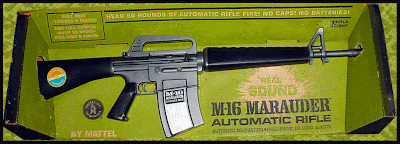"This has been one of the most informative AR threads, though."
-JR
That's what my goal was.
![Wink [wink] [wink]](/xen/styles/default/xenforo/smilies.vb/002.gif)
I kind of missed what you were going with here I guess.
That does not negate my answers but perhaps "How to choose the best AR for you" should have been the title. In that case here is what my thought process was, and I think what will yield the best results for someone trying to wade through the AR swamp.
Step 1)
Determine what the intended use will be. Do not lie to yourself in this area. Not being truthful with yourself will lead to a higher cost in the end. If you are looking to build a race / ultra-high end AR, with tight 200yd groups, and un-paralleled repeatability, then off the shelf Olympic arms is not going to fill the bill.
Step 2)
Determine what your budget is. This will lead to conflict with step one. If you want a sub MOA 200 yd AR you are not going to do that on a tight budget. When doing this you will have to take all factors into account. Building a rifle can be fun but if you fail to lay out all the parts needed right out of the gate, you will find any budget eaten up quickly. Also stick to the plan otherwise the budget can go wrong real quick. If you budget for a 50$ stock and then go with a 150$ stock realize what this will do the budget. Do not forget the little things, BUIS can be expensive if you want a good set. These little changes add up quickly. Plus do not forget to add in the tools required. If you are only going to build one AR that tool investment needs to be taken into consideration.
Step 3)
Determine what your level of failure rate or tinkering you are willing to put up with. If you are using the gun for casual plinking and it fails you pack it up and go home for the day. If you just spent 100s of $ on a carbine class or for lodging at a 3 gun competition then the 50$ you saved to get the cheapest bolt will pale in comparison to the $s lost going home the first day after your gun fails.
Once you have determined use, budget and failure rate then use "The List" if you are looking into a production gun. If looking for a high end custom the list will be of little use to you. Do your homework here. I found the cost of stepping out of the 2nd tier guns into the bottom of the 1st tier guns not to be that much in the grand scheme of things. I also had specific features and parts in mind for the build I wanted so that leads me in a particular direction. I also found that once I took into account upgrades that I would want then the 2nd tier guns were the same price as the completed 1st tier guns.
What quickly became apparent to me is that if you want a 3rd tier gun then you get an off brand/no name gun with questionable hit or miss reliability. The assembly can be hit or miss as well. You might get a guy who can put together a lower and does it well but you are just as likely to get a guy who is slapping the parts together and hoping it will work out for the end user. While one guy buys one and said it works great the next guy will say he had nothing but problems until he sold it and was happy to see it gone. Chances are that if you plan on buying a 3rd tier gun with the plans of building it up over time you will be better off buying a stripped lower and receiver as most of the parts you are paying for will end up in the trash anyway and the Upper and lower you end up with as a base may be of questionable quality. From a machieists point of view these guns are probably made off of parts that are at the very edges of the acceptable specifications for the parts used.
2nd tier guns are good guns. Most are well made and have a low failure rate but are have been known to fail under extreme conditions. These are great for the average shooter. Some are probably used by law enforcement. They are good guns at a good price. They represent a good value. Using the chart may allow you to improve these guns by inspecting them for proper assembly, checking to see if the bolt is staked for example.
1st tier guns are the top of the line. They will have the lowest failure rate and highest quality parts. They will more than likely be assembled by and for shops that hold to a higher quality in parts and assembly. Some of the top tier guns are priced just over the 2nd tier but most tend to be the higher $ semi-custom rifles. Some manufacturers here supply the military and law enforcement communities. Others are geared to the compeition shooter.
In my opinion there is no "Best AR" any time that is asked it becomes a pissing match between tier one vs. tier 2 and LMT vs. colt vs Novesek vs whoever you want to add. There is however a Best for You AR. The gun that will be acceptable to the weekend plinker will never be acceptable to a professional 3 gun competitor. Just as an out of the box Savage from Dicks will not be acceptable to someone who is looking to make 1000 yd rifle hits.

![Wink [wink] [wink]](/xen/styles/default/xenforo/smilies.vb/002.gif)

![Grin [grin] [grin]](/xen/styles/default/xenforo/smilies.vb/041.gif) .
.![Laugh [laugh] [laugh]](/xen/styles/default/xenforo/smilies.vb/012.gif)